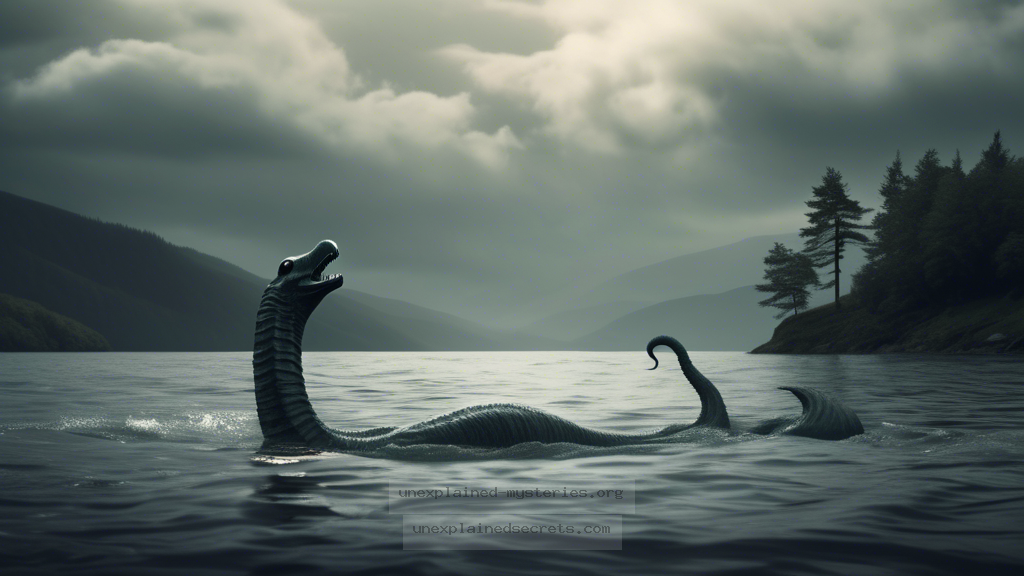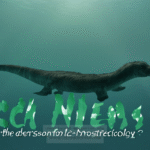What Recent Sonar Discoveries Reveal About the Loch Ness Monster Phenomenon?
What Recent Sonar Discoveries Reveal About the Loch Ness Monster Phenomenon?
The Loch Ness Monster has fascinated and perplexed both believers and skeptics for decades. This legendary creature, often affectionately referred to as “Nessie,” has become emblematic of cryptozoology, drawing countless enthusiasts to the misty shores of Loch Ness in Scotland. But what if recent sonar discoveries could shine a new light on this age-old mystery? In this post, we will explore the implications of recent sonar findings, historical accounts, and the ongoing quest for truth regarding the Loch Ness Monster.
Understanding the Sonar Technology Used in Loch Ness Investigations
Sonar (Sound Navigation and Ranging) technology has been a vital tool in underwater exploration and has gained prominence in the search for the Loch Ness Monster. The technology works by emitting sound waves that bounce back after hitting an object, allowing researchers to create a visual representation of the underwater landscape. Recent advancements in sonar technology have led to more accurate and detailed maps of Loch Ness’s depths.
In 2018, a team from the Ocean Exploration Trust utilized advanced multi-beam sonar systems to scan the loch’s depths. Their findings not only provided a clearer picture of the underwater geography but also recorded various unidentified objects. These sonar images have reignited interest in the possibility of large unknown creatures inhabiting Loch Ness.
Key Point: Advanced sonar technology is revolutionizing the search for the Loch Ness Monster, enabling clearer visualization of underwater structures and unidentified objects.
Historical Context: The Evolution of Loch Ness Monster Sightings
The legend of the Loch Ness Monster dates back to ancient times, with the first recorded sighting occurring in the 6th century. St. Columba, a Christian missionary, reportedly encountered a “water beast” while traveling through the loch. However, it wasn’t until the 1930s that Nessie captured widespread public attention, catalyzed by the infamous “Surgeon’s Photo” of 1934, which purportedly showed the creature’s head and neck.
Over the decades, numerous sightings and accounts have been documented, ranging from vague reports of disturbances in the water to more detailed descriptions of a large, serpentine creature. While many sightings have been debunked or attributed to misidentified animals or logs, the allure of the Loch Ness Monster continues to thrive in popular culture.
Recent Sonar Discoveries: What Did They Find?
In recent expeditions, sonar technology has provided compelling evidence of large, unidentified objects within Loch Ness. In 2020, a team of researchers from the University of the Highlands and Islands conducted a sonar survey that revealed several unusual shapes at depths between 30 and 100 meters. Some of these shapes were large enough to suggest the presence of a creature akin to the Loch Ness Monster.
Despite the excitement these findings generated, scientists remain cautious. The shapes detected could easily be geological formations, submerged trees, or even man-made debris. Nevertheless, the intrigue surrounding these discoveries continues to capture the public’s imagination, leading to further investigations.
Notable Fact: In 2020, sonar surveys revealed large underwater shapes in Loch Ness, prompting renewed interest in the possibility of Nessie’s existence.
Core Concepts: Theories Surrounding Nessie’s Existence
Various theories have been proposed regarding the Loch Ness Monster’s identity, ranging from prehistoric reptiles to large fish species. The most popular hypotheses include:
- Survivor of the Plesiosaur: Some cryptozoologists believe Nessie may be a descendant of the Plesiosaurus, a marine reptile that existed during the time of the dinosaurs.
- Giant Eel: Another theory posits that Nessie is a giant eel, which could account for sporadic sightings and the creature’s elusive nature.
- Misidentifications: Many experts argue that what witnesses perceive as Nessie could be misidentified animals, such as otters or large fish.
These theories highlight the varied perspectives surrounding the Loch Ness Monster, emphasizing the blend of scientific inquiry and folklore that shapes the discourse.
Practical Implications: What Do These Findings Mean for Cryptozoology?
The implications of recent sonar findings are significant for the field of cryptozoology. They reinforce the need for rigorous scientific investigation into unexplained phenomena while simultaneously acknowledging the cultural importance of such mysteries. The continued interest in Loch Ness serves as a catalyst for conservation efforts aimed at preserving the unique ecosystem of Loch Ness.
Moreover, sonar technology’s advancements can potentially apply to other unexplained mysteries around the world. The methodology used in Loch Ness could be adapted for investigations into other legendary creatures, such as the Sasquatch or the Chupacabra.
Practical Insight: The sonar findings at Loch Ness highlight the intersection of science and folklore, encouraging ongoing research and conservation efforts.
Alternative Perspectives: Skepticism and Debunking Myths
While the sonar findings have sparked renewed interest, skeptics argue that the evidence remains inconclusive. Many believe that reports of Nessie stem from psychological phenomena, such as pareidolia, where the brain interprets random stimuli as familiar shapes. Additionally, the prevalence of hoaxes and misidentifications complicates the search for truth.
In 2019, Dr. Neil Gemmell, a scientist from New Zealand, conducted a DNA study of Loch Ness water samples. His research found no evidence of large animals, suggesting that the Loch Ness Monster may be a product of myth rather than reality. His findings serve as a reminder that scientific inquiry must remain objective and free from bias.
Common Misconceptions: What People Often Get Wrong About Nessie
The Loch Ness Monster is shrouded in misconceptions that perpetuate myths and hinder rational investigation. Some common misconceptions include:
- Nessie is a single creature: Many assume there is just one Loch Ness Monster, while it is more plausible that various unidentified aquatic beings contribute to the lore.
- All sightings are hoaxes: While many claims have been debunked, some witnesses genuinely believe they have encountered something extraordinary.
- Scientific dismissal of the Loch Ness Monster: While some scientific studies have found no evidence, others continue to explore the possibility of unknown species living in the loch.
Understanding these misconceptions can foster a more nuanced discussion about the Loch Ness Monster and its place in both scientific and cultural narratives.
Best Practices for Investigating the Loch Ness Monster
For those interested in exploring the Loch Ness Monster phenomenon, there are several best practices to consider:
- Engage in scientific inquiry: Utilize modern technology and methods to gather evidence rather than relying solely on anecdotal accounts.
- Collaborate with experts: Work alongside scientists, historians, and cryptozoologists to ensure a well-rounded approach to investigation.
- Be open-minded yet skeptical: Approach findings with a balance of curiosity and critical thinking to maintain objectivity.
Tip: Engaging in thoughtful investigation can enhance understanding and respect for the Loch Ness Monster legend while promoting scientific literacy.
Future Developments: Ongoing Research and Exploration
The quest to uncover the truth about the Loch Ness Monster is far from over. Ongoing research efforts continue to employ the latest sonar and underwater exploration technologies. In 2022, a new initiative called “Nessie 2022” aimed to conduct the most extensive sonar survey yet, attracting the attention of scientists, enthusiasts, and the media alike. This project hopes to gather comprehensive data that could either validate or debunk the existence of Nessie once and for all.
The potential for new discoveries remains high, and the future of Loch Ness exploration promises to be as intriguing as its past. With each expedition, the possibility of shedding light on this age-old mystery grows, fueling the imaginations of those who remain captivated by the enigma of Loch Ness.
Conclusion: The Enduring Mystery of the Loch Ness Monster
The sonar discoveries at Loch Ness have reignited discussions surrounding the existence of the Loch Ness Monster, showcasing the delicate balance between folklore and scientific inquiry. While recent findings may not provide definitive proof of Nessie’s existence, they certainly highlight the continuous allure of this mysterious creature.
As technology advances and our understanding deepens, the Loch Ness Monster remains an emblematic figure of the unknown, inviting both skeptics and believers to explore the waters of Loch Ness. Whether Nessie is ultimately confirmed or debunked, the legend continues to thrive, reminding us of the wonders and mysteries that still exist in our world.
Other Articles
Recent Posts
- What Happened to Flight MH370? The Conspiracy Theories That Still Haunt Us
- What Secrets Lurk Within the Walls of the Infamous Trans-Allegheny Lunatic Asylum?
- What Evidence Supports the Existence of Bigfoot in the Pacific Northwest?
- What Happened to the Indus Valley Civilization? Unraveling the Mysteries of Ancient Urban Life
- Can Telepathy Be Scientifically Proven Through Laboratory Evidence?







